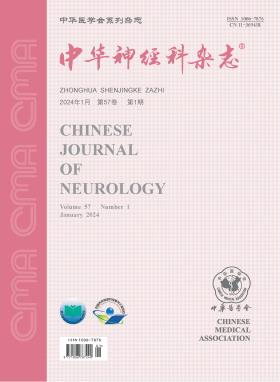Clinical observation of rituximab in three patients with anti-N-methyl-D-aspartate receptor encephalitis
Q4 Medicine
引用次数: 1
Abstract
Objective To investigate the efficacy and safety of rituximab in the treatment of anti-N-methyl-D-aspartate receptor (NMDAR) encephalitis. Methods Three patients with anti-NMDAR antibodies in cerebrospinal fluid and serum hospitalized from May 2012 to July 2014 were retrospectively reviewed. The clinical syndrome, investigations, and therapeutic interventions by rituximab when first line immunotherapy failed were evaluated. Results All 3 patients were females with median age of 17 years (12, 17, and 22 years). One patient had ovarian teratoma. All 3 patients presented with psychiatric symptoms and movement disorders, 2 of which developed into a state of unresponsiveness. Brain magnetic resonance imaging of 2 patients was unremarkable, and 1 showed T2 and FLAIR hyperintensity among the areas of medulla, pons, caudex cerebri and callosum. Fluoro-2-deoxy-D-glucose-PET showed variable multifocal cortical and subcortical abnormalities that changed during the course of the disease. Electroencephalograms were abnormal in all patients, showing non-specific, slow, and disorganised activity, 1 showing extreme delta brush. The cerebrospinal fluid showed lymphocytic pleocytosis. All patients showed no response to treatment with first line immunotherapy (corticosteroids, intravenous immunoglobulin (400 mg·kg-1·d-1×5 d, 2-3 courses of treatment)). After the administration of rituximab, 1 patient responded slower, whereas the other 2 patients who recovered dramatically (375 mg/m2 every week for 3-4 weeks)continued immunosuppression with mycophenolatemofetil for 1 year. Relapse occurred in 1 patient when the immunotherapies discontinued 6 months later. During the treatment of rituximab, 2 patients had grade 3 infectious adverse events (hospitalization and intravenous administration of antibiotics). Conclusions Rituximab is effective for the patients with anti-NMDAR encephalitis who fail to respond to the first line immunotherapy. However the utility of rituximab is still a challenge due to the risk of infectious complications and off-label use. Key words: Anti-N-methyl-D-aspartate receptor encephalitis; Immunotherapy; Antibodies, monoclonal, murine-derived; Therapies, investigational; Infection利妥昔单抗治疗抗n -甲基- d -天冬氨酸受体脑炎3例临床观察
目的探讨利妥昔单抗治疗抗n -甲基- d -天冬氨酸受体(NMDAR)脑炎的疗效和安全性。方法回顾性分析2012年5月至2014年7月住院治疗的3例脑脊液及血清抗nmdar抗体患者。评估一线免疫治疗失败时的临床症状、调查和利妥昔单抗的治疗干预。结果3例患者均为女性,中位年龄为17岁(12、17、22岁)。1例患者有卵巢畸胎瘤。3例患者均出现精神症状和运动障碍,其中2例发展为无反应状态。2例脑磁共振成像无明显异常,1例髓质、脑桥、脑尾、胼胝体等区域出现T2和FLAIR高信号。氟-2-脱氧-d -葡萄糖- pet显示在疾病过程中发生变化的多灶皮质和皮质下异常。所有患者的脑电图均异常,表现为非特异性、缓慢和无组织的活动,1表现为极端的三角刷。脑脊液淋巴细胞增多。所有患者对一线免疫治疗(皮质类固醇、静脉注射免疫球蛋白(400 mg·kg-1·d-1×5 d, 2-3个疗程)均无反应。在给予利妥昔单抗后,1例患者反应较慢,而另外2例患者明显恢复(每周375 mg/m2,持续3-4周),持续使用霉酚酸莫非特1年。6个月后停止免疫治疗,1例复发。在利妥昔单抗治疗期间,2例患者发生3级感染不良事件(住院和静脉给药抗生素)。结论利妥昔单抗对一线免疫治疗无效的抗nmdar脑炎患者是有效的。然而,由于感染并发症和标签外使用的风险,利妥昔单抗的实用性仍然是一个挑战。关键词:抗n -甲基- d -天冬氨酸受体脑炎;免疫治疗;单克隆抗体,鼠源性;疗法,临床实验;感染
本文章由计算机程序翻译,如有差异,请以英文原文为准。
求助全文
约1分钟内获得全文
求助全文

 求助内容:
求助内容: 应助结果提醒方式:
应助结果提醒方式:


